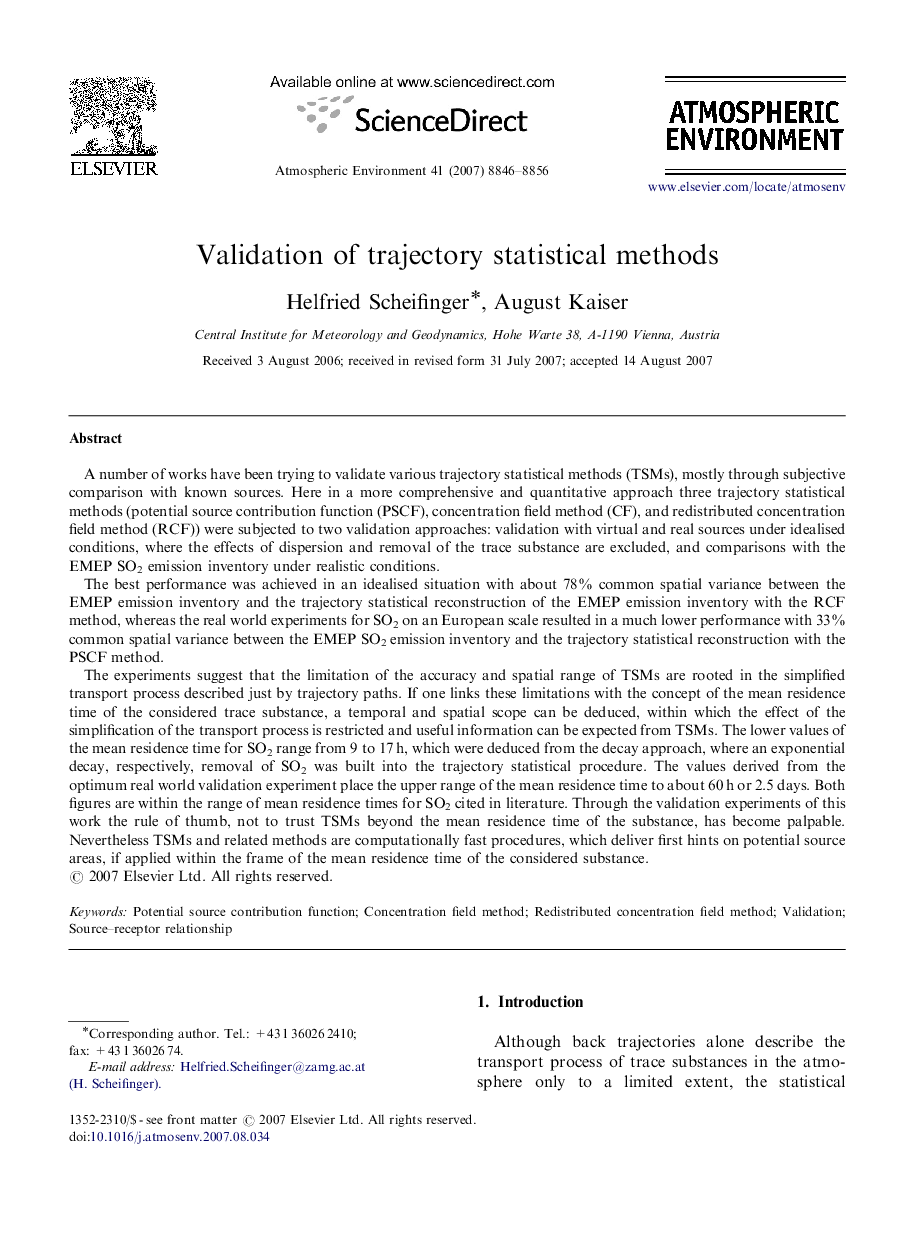| کد مقاله | کد نشریه | سال انتشار | مقاله انگلیسی | نسخه تمام متن |
|---|---|---|---|---|
| 4443133 | 1311180 | 2007 | 11 صفحه PDF | دانلود رایگان |

A number of works have been trying to validate various trajectory statistical methods (TSMs), mostly through subjective comparison with known sources. Here in a more comprehensive and quantitative approach three trajectory statistical methods (potential source contribution function (PSCF), concentration field method (CF), and redistributed concentration field method (RCF)) were subjected to two validation approaches: validation with virtual and real sources under idealised conditions, where the effects of dispersion and removal of the trace substance are excluded, and comparisons with the EMEP SO2 emission inventory under realistic conditions.The best performance was achieved in an idealised situation with about 78% common spatial variance between the EMEP emission inventory and the trajectory statistical reconstruction of the EMEP emission inventory with the RCF method, whereas the real world experiments for SO2 on an European scale resulted in a much lower performance with 33% common spatial variance between the EMEP SO2 emission inventory and the trajectory statistical reconstruction with the PSCF method.The experiments suggest that the limitation of the accuracy and spatial range of TSMs are rooted in the simplified transport process described just by trajectory paths. If one links these limitations with the concept of the mean residence time of the considered trace substance, a temporal and spatial scope can be deduced, within which the effect of the simplification of the transport process is restricted and useful information can be expected from TSMs. The lower values of the mean residence time for SO2 range from 9 to 17 h, which were deduced from the decay approach, where an exponential decay, respectively, removal of SO2 was built into the trajectory statistical procedure. The values derived from the optimum real world validation experiment place the upper range of the mean residence time to about 60 h or 2.5 days. Both figures are within the range of mean residence times for SO2 cited in literature. Through the validation experiments of this work the rule of thumb, not to trust TSMs beyond the mean residence time of the substance, has become palpable. Nevertheless TSMs and related methods are computationally fast procedures, which deliver first hints on potential source areas, if applied within the frame of the mean residence time of the considered substance.
Journal: Atmospheric Environment - Volume 41, Issue 39, December 2007, Pages 8846–8856